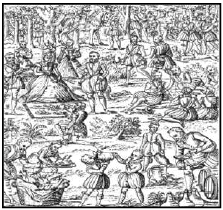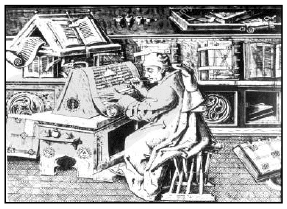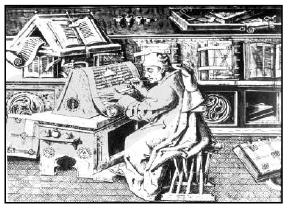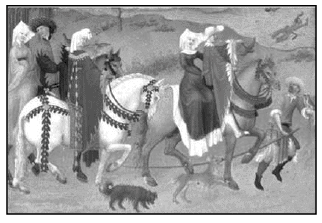Test: The Three Orders- Source Based Type Questions - Humanities/Arts MCQ
15 Questions MCQ Test History Class 11 - Test: The Three Orders- Source Based Type Questions
Look at the following picture carefully from The Three Orders and answer the following questions by choosing the correct option:

Q. Which century do you think this picture belongs to?

Look at the following picture carefully from The Three Orders and answer the following questions by choosing the correct option:

Q. What do you think the people are doing in this picture?

| 1 Crore+ students have signed up on EduRev. Have you? Download the App |
Look at the following picture carefully from The Three Orders and answer the following questions by choosing the correct option:

Q. The picture is depicting a famous ruler holding a picnic with his close friends.

Look at the following picture carefully from The Three Orders and answer the following questions by choosing the correct option:

Q. The painting is showing a famous ruler. Whom do you think he/ she is?
Study the below picture from The Three Order carefully and answer the following question by choosing the correct option:

Q. Where do you think the person is working?
Study the below picture from The Three Order carefully and answer the following question by choosing the correct option:

Q. The picture shows a man sitting on a table. Who the man is looking like?
Study the below picture from The Three Order carefully and answer the following question by choosing the correct option:

Q. In Benedictine monasteries there was a manuscript with 73 chapters of rules.
Study the below picture from The Three Order carefully and answer the following question by choosing the correct option:

Q. What do you think the person shown in the picture is doing?
Study this picture carefully and answer the following questions by choosing the correct option:

Q. An elaborately dressed group of noblemen and noblewomen are shown carrying:
Study this picture carefully and answer the following questions by choosing the correct option:

Q. The above picture illustrates a scene and popularly known as:
Study this picture carefully and answer the following questions by choosing the correct option:

Q. The noblemen and noblewomen are shown accompanying:
Study this picture carefully and answer the following questions by choosing the correct option:

Q. The above picture is an illustration of:
Read the following extract carefully and answer the following question by choosing the correct option:
Gaul, a province of the Roman Empire, had two extensive coastlines, mountain ranges, long
rivers, forests and large tracts of plains suited to agriculture.
The Franks, a Germanic tribe, gave their name to Gaul, making it ‘France’. From the sixth century, this region was a kingdom ruled by Frankish/ French kings, who were Christian. The French had very strong links with the Church, which were further strengthened when in 800 the Pope gave King Charlemagne the title of ‘Holy Roman Emperor’, to ensure his support. Across a narrow channel lay the island of England–Scotland, which in the eleventh century was conquered by a duke from the French province of Normandy.
Q. Who were French Kings?
Read the following extract carefully and answer the following question by choosing the correct option:
Gaul, a province of the Roman Empire, had two extensive coastlines, mountain ranges, long
rivers, forests and large tracts of plains suited to agriculture.
The Franks, a Germanic tribe, gave their name to Gaul, making it ‘France’. From the sixth century, this region was a kingdom ruled by Frankish/ French kings, who were Christian. The French had very strong links with the Church, which were further strengthened when in 800 the Pope gave King Charlemagne the title of ‘Holy Roman Emperor’, to ensure his support. Across a narrow channel lay the island of England–Scotland, which in the eleventh century was conquered by a duke from the French province of Normandy.
Q. Who were Franks?
Read the following extract carefully and answer the following question by choosing the correct option:
Gaul, a province of the Roman Empire, had two extensive coastlines, mountain ranges, long
rivers, forests and large tracts of plains suited to agriculture.
The Franks, a Germanic tribe, gave their name to Gaul, making it ‘France’. From the sixth century, this region was a kingdom ruled by Frankish/ French kings, who were Christian. The French had very strong links with the Church, which were further strengthened when in 800 the Pope gave King Charlemagne the title of ‘Holy Roman Emperor’, to ensure his support. Across a narrow channel lay the island of England–Scotland, which in the eleventh century was conquered by a duke from the French province of Normandy.
Q. Who gave the title of ‘Holy Roman Emperor’ to king Charlemagne?
|
25 videos|98 docs|20 tests
|
|
25 videos|98 docs|20 tests
|

















